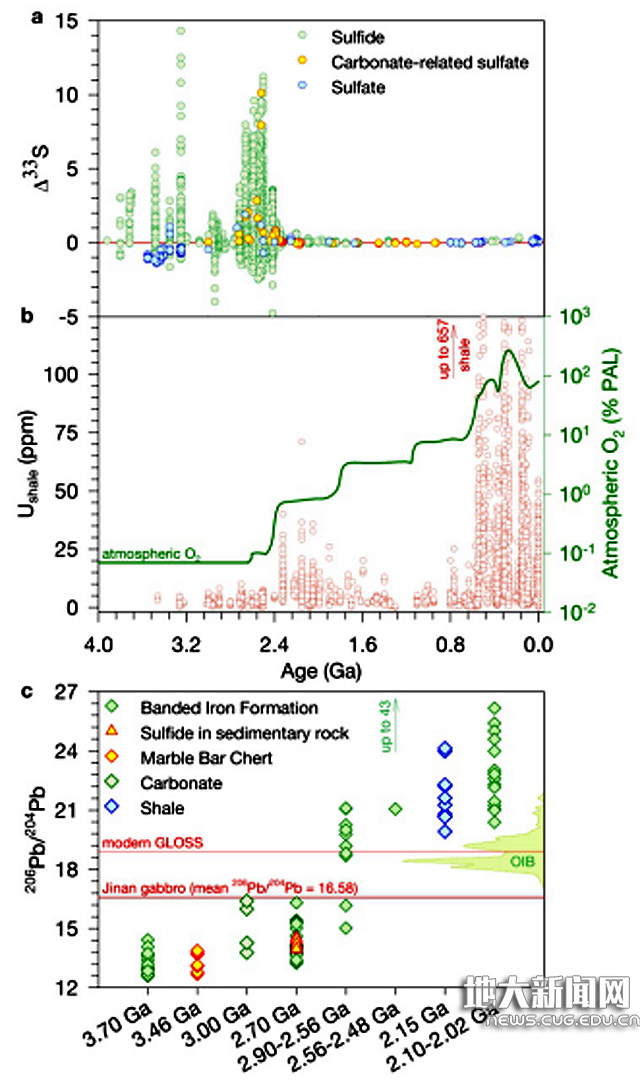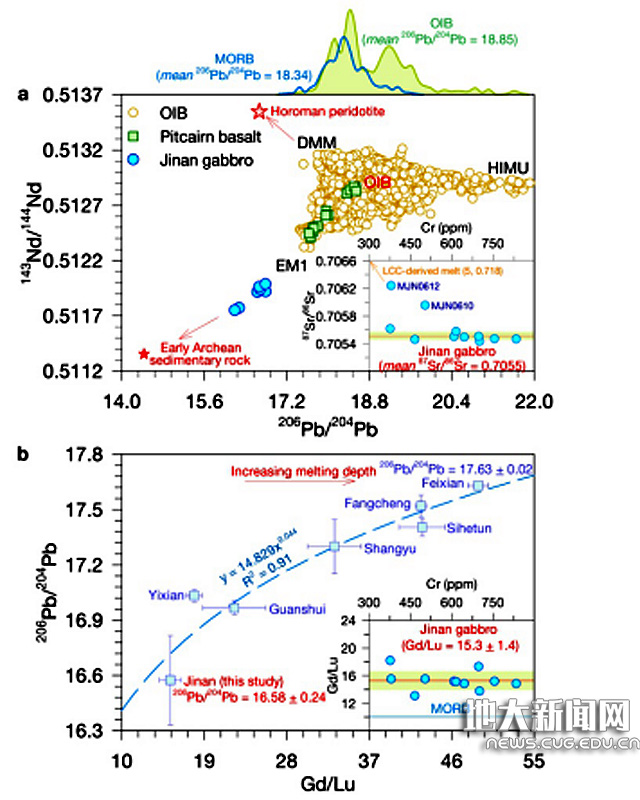CUG team led by Prof. LIU Yongsheng of the School of Earth Sciences has published “Archean, highly unradiogenic lead in shallow cratonic mantle” in Geology, explaining the origin of highly unradiogenic lead in mantle and the corresponding deep geodynamic processes and establishing the important relationship between the Great Oxidation Event (about 2.3 ~ 2.4 billion years ago) and the lead isotopic composition in Earth’s interior.
The lead (Pb) isotopic composition in Earth’s interior is an important parameter that must be accounted for by models that seek to explain the differentiation history of the Earth. The mean continental crust and most oceanic basalts (ocean-island basalt [OIB]; mid-oceanic ridge basalt [MORB]) have apparently higher 206Pb/204Pb and 207Pb/204Pb ratios than the bulk silicate earth estimates, and lie either on or immediately to the right of the so-called “meteorite isochron”. This has been termed the “lead paradox” and requires the existence of a missing unradiogenic Pb reservoir inside Earth.
To answer the question, some scholars presume that Pb pumped to the core as a sulfophilic element. However, metal–silicate melt partition coefficients for Pb measured in high-temperature and high-pressure experiments do not support this presumption. The missing Pb has been argued to have been dissolved in the iron-rich core or to reside in the silicate Earth (lower continental crust) or lithospheric mantle.

Pb isotopic composition of oceanic basalt and mantle periodite
Secular U changes in marine shales marked the rapid rise of atmospheric oxygen after the Great Oxidation Event, which resulted in soluble U6+transport into the oxidized oceans and, ultimately, by means of subduction, back to the mantle. Hence, modern arc lavas at subduction zones have systematically subchondritic Th/U, indicative of the addition of post-Archean oceanic oxidized U to their sources. Also, 206Pb/204Pb values of sedimentary rocks and their hosted sulfides record a stepwise shift to higher 206Pb/204Pb with the onset of the GOE. This indicates that Archean sediments deposited in anoxic, U-poor oceans were more enriched in unradiogenic Pb relative to post-Archean sediments deposited in oxidized, U-rich oceans. What is the fate of archean sediments after subduction and recirculation?How does the Great Oxidation Event affect the redox state and chemical composition of the deep mantle?For a long time, these are scientific questions worthy of being discussed by geologists.

The variation characteristics of oxygen, redox sensitive elements, and isotopes of the Earth in geological history
Prof. LIU’s team presents coupled geochemical and Sr-Nd-Pb-S isotopic data of Early Cretaceous primitive gabbros from the North China craton, and their study shows that thegabbros originated from an Archean fluid-metasomatized refractory peridotite source, in which highly unradiogenic lead was preferentially released with subducted Archean seawater and sequestered into recrystallized sulfides at shallow mantle depths. Therefore, the study provides a new perspective for exploring the origin of enriched mantle 1 (EM1).

Pb-Nd isotopic composition of oceanic-island basalt and Jinan gabbros
This research was supported by the National Natural Science Foundation of China and the 111 Project. The corresponding author is Prof. LIU Yongsheng, and the first author is doctoral student ZHANG Junbo.
Information of the paper:
Title: Archean, highly unradiogenic lead in shallow cratonic mantle
Authors: Jun-Bo Zhang, Yong-Sheng Liu, Mihai N. Ducea, Rong Xu
Source: Geology, Available online 27 March 2020
DOI: 10.1130/g47064.1
Link:https://doi.org/10.1130/G47064.1